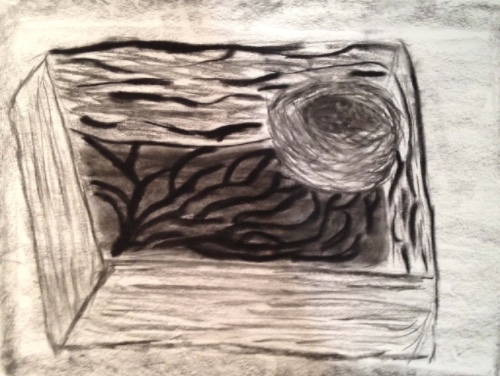It is useful to think of drawing as involving two modes-- the intuitive and the analytical. The first is free and the second is controlled. We use our intuitive skills to grasp the essence of what we draw, to capture its spirit and feeling. Our analytical skills come into play when we want to sharpen and refine.
Problems can occur when we try to employ these two modes at the same time. Analysis freezes and blocks the loose attitude required for intuition. Intuition softens and blurs the facilities needed for analysis. For full functioning, each must work on its own.
"If it is necessary to rough cast with a broom, it is necessary to finish off with a needle." Eugene Delacroix
Delacroix was one of the first artists to celebrate handwriting as a vital component of art, believing that it should remain visible not only in the drawing but in the finished painting as well.
A selection of drawings
Drawings below are from my class at Rocky Mountain College.
In class student's examined the handwriting of four master artists, Giorgio Morandi, Edgar Degas, Rembrandt and Vincent van Gogh. Student's copied the marks of each artist to see how they combine free and controlled mark-making. They emulated these marks as a way to get in touch with their own handwriting. Emulating is doing a drawing of your own in the handwriting of another. Students used what they learned about mark-making to draw a bird's nest.
To start, student's were asked to draw a bowl emulating the marks of Morandi, Degas, Rembrandt and van Gogh. Drawing a bowl helped student's simplify their subject and focus on how to use each mark.
Next, each student was given a bird's nest. They were asked to incorporate both the nest and the box it came in into a drawing using what they leaned about mark-making. Each drawing measures 18" x 24".












